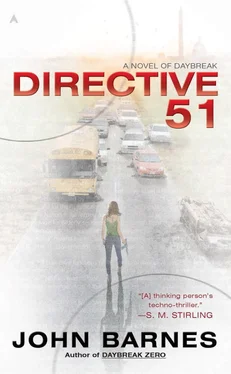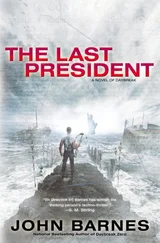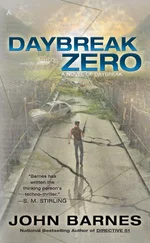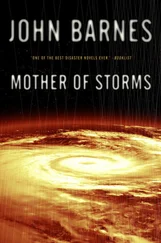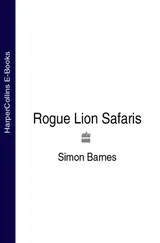“Yeah.”
“Okay, my stuff ferments flexible plastic, loves beverage bottles but really any plastic, semiaerobic so you kill it with bleach or peroxide. There’s three gallon jugs of peroxide on the table—pour it over any surface you need to touch before you handle any of your plastic.”
“My stuff makes nitric acid wherever there’s a fluctuating electromagnetic field, and powers off a temperature gradient,” Jason said. “Strong alkali, like lye, shuts it down temporarily and neutralizes the acid.”
“Thanks! Why don’t you walk out, and then I’ll walk in?”
“It’s a deal.” Jason stepped back to let Zach walk past the door and out into the sunlight. He was obviously careful not to step anywhere near where Jason had stood.
Not worrying about the Holiday Inn’s carpets since they’d never have time to bill Zach before Daybreak took hold, Jason poured peroxide over a big patch of the carpet, and followed up by sprinkling Liquid-Plumr there. He set his pack in the center, disinfected it, and gave it some more Liquid-Plumr, splashed more of the nasty chemicals onto his gloved hands and onto the plastic bags that had held his laptop and change of clothes.
With water from the faucet in a glass he had just removed from the hotel paper wrapper (SEALED FOR YOUR PROTECTION), Jason rinsed his sealed plastic bags, including the one with the laptop. He stripped and threw his clothes and shoes on the bed, helping the maid to scatter more of his nanospawn and Zach’s biotes.
After the long day, he took longer in the hot shower than he’d meant to—might as well enjoy the Big System one last time.
When at last Jason walked across the parking lot to Denny’s, the air tasted sweet and clean. Still an hour of daylight left? He reached for his watch before he remembered it had already died. Good fucking riddance. He was whistling “Natural Mountain Man” as he sprinted across the street.
ABOUT THE SAME TIME. WASHINGTON. DC. 7:00 P.M. EST. MONDAY. OCTOBER 28.
“So the Indian Air Force had good remote sensing?” Cameron asked.
The Air Force liaison said, “As good as ours—it’s the same gear, we sold it to them, and they know what to do with it. So yeah, we can count on this result. The spectroscope was consistent with light hydrocarbons—at a guess, that would be a largish tank of propane in the plane’s body, maybe juiced with a few cylinders of aviation oxygen. We think the pilot and crew probably parachuted somewhere over wild country not long after they dropped the bodies in Thailand; jumping into a jungle would be a lot better than riding the plane through the operation.”
“How did they know we’d get it together fast enough to shoot down the 737?”
“They didn’t have to. A big white airliner with two engines crashing anywhere in that part of the world would just have been one more good decoy.” Nancy Telabanian sat back, folding her arms around herself. “Because the Indian pilots are good and know their business, we can be pretty sure about three important facts: It’s almost certainly the Lion Airways plane stolen from Sentani, with its tail repainted; it’s consistent with being the plane that dropped the bodies of Samuelson’s three key liaisons into the market square in Thailand; and it was unmanned by the time we shot it down. And it couldn’t possibly have been a Dreamliner. So Air Force Two is still somewhere, and the blow is going to fall… somewhere.”
Marshall—whoever or whatever his official job and title were, he seemed to be the one in charge of getting useful graphics up in a short period of time—spoke over the loudspeaker. “Per your request, Mr. Nguyen-Peters, we’ve got a graph to show estimated arrival times on the West Coast and other locations. Shall I put it up on the main screen?”
“Yes,” Cam said, “I think you’d better.”
The map of the eastern Pacific, and western North America, could not have been clearer; it showed the ocean as black, areas where the 787 could already have hit as red, and areas still safe as aqua. Hawaii and coastal Alaska from the Bering Sea almost to the panhandle were red. So far the West Coast was aqua. But a tongue of red crept down toward Juneau, inexorably south, like a glacier of fire and blood, widening as it went.
ABOUT THE SAME TIME. RAPID CITY. SOUTH DAKOTA. 5:04 P.M. MST. MONDAY. OCTOBER 28.
Marshalene still had half a tank and a full charge, but she’d had way too much liquid, and besides, she was bored. She liked truck stops because they always had a lot of silly junk that she could buy, and show to people to show them how she was kind of above it all, but not like being all superior, just she knew this stuff was junk and some people bought it for real.
It was dinner time and the café smelled good with all the white-trash cookin’, and she decided she could stand country music for some good meatloaf and pie. Besides, the lot had been so crowded, she teased herself, that she’d had to walk all the way here from where she’d parked, almost back by the highway.
The booth felt good and there were three cheesy bobbleheads and a couple cool T-shirts to linger about buying, so it was almost an hour before she got back on the road. Meanwhile, the wind under the Prius shifted, and nanoswarm blew across the parking lot and on into Rapid City itself; more than a hundred more trucks, bound all over the northern United States, were infected, along with four big transporters hauling wind-generator blades to Fort Collins, a Gray Liner bound for Winnipeg, and seven diesel-electric locomotives, three headed into the DME system and four for the old Great Northern. Within twenty-four hours, nanoswarm from Marshalene’s Prius would spread from Manitoba to northern California and Vancouver to Little Rock. It so happened that Jason’s eggs were among the most efficient ones out there, producing some of the fastest-reproducing nanoswarm, and Jason had been right all along; Marshalene’s car was perfect for the job. In any evolutionary system, tiny advantages become gigantic population shifts; it was nothing more than that.
ABOUT TWENTY MINUTES LATER. ABOVE ANGEL STADIUM. ANAHEIM. CALIFORNIA. 4:20 P.M. PST. MONDAY. OCTOBER 28.
Well, I guess I’m seeing the World Series, after all, Greg Redmond thought, circling Anaheim at forty-three thousand feet, all the higher the old A-10 could go. What he’d been told back in Arizona, while the ground crews ran around madly, was enough to scare the shit out of any sensible man with a wife and three small kids—phrases like get there ASAP , you’re already late , vitally important to obey all orders at once , and the single scariest phrase in the military lexicon: This is not a drill .
The Navy had the front line. Somewhere far out over the horizon, F-18 Super Hornets out of North Island NAS and LeMoore were scouting up and down the coast, using the hastily-given tactical callsign “Noseguard.” They were highly capable planes, each carrying more-than-good radar and a full array of long-range and visual-range missiles, but there weren’t many of them. Still, if the enemy designated “Bad Dreamliner” happened to come in through any of the territory the Super Hornets were covering, they had the tools for the job.
That was the scariest part. The CO had told them that there was “Unlimited authorization to destroy that plane.”
Greg’s buddy Nate had said, “Sir, I’m not clear. Unlimited authorization means—”
“Unlimited authorization means unlimited. Nothing is off-limits as long as that 787 gets destroyed before it can get to where it’s going. Use the Sidewinders, use the big gun, hell, use the Mavericks or ram the sonofabitch if you have to.” Greg had swallowed hard; the Mavericks were used to take out tanks, and it did not sound like the CO was kidding about ramming, either. “Everybody who is out on this mission—and they have called out everybody —is carrying the full suite of weapons. They are there for you to use. Of course, avoid collateral damage if you can, but if you can’t—destroy Bad Dreamliner. There’s no such thing as exceeding this order. Clear?”
Читать дальше
